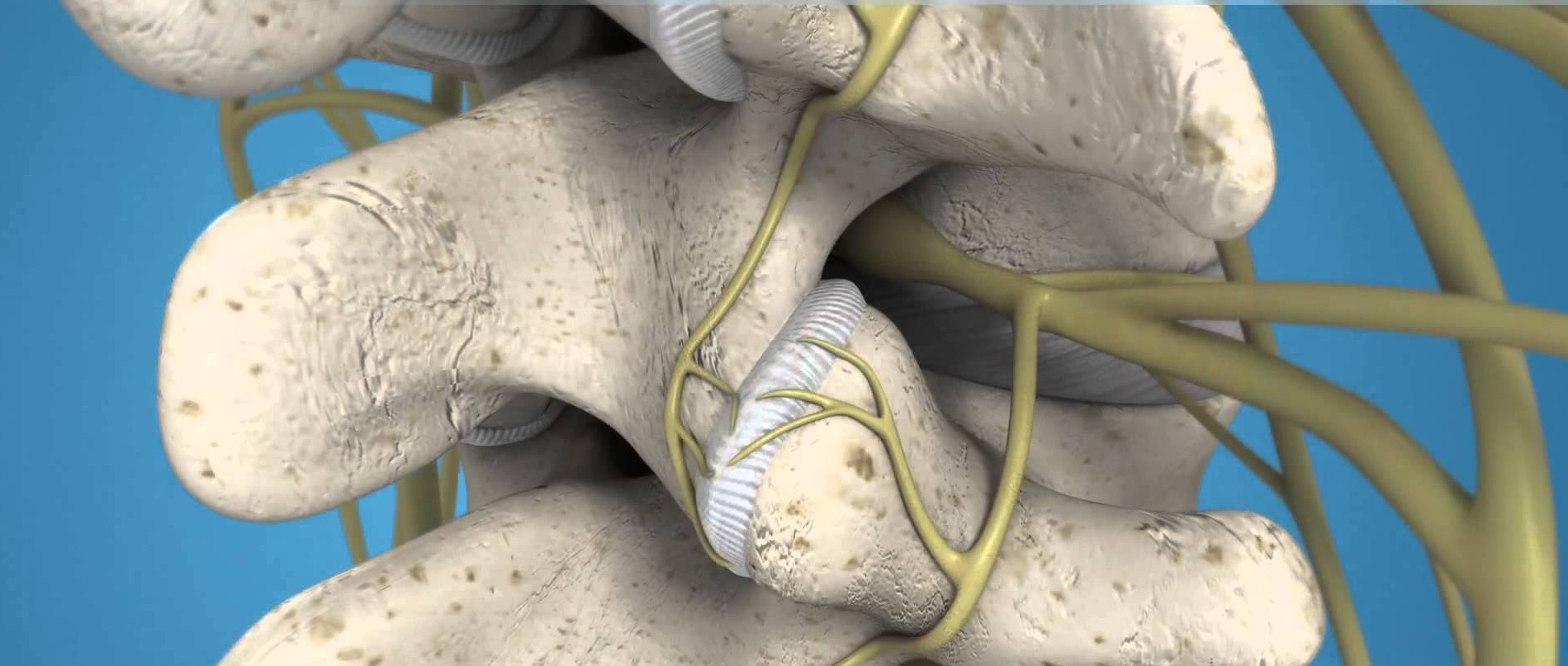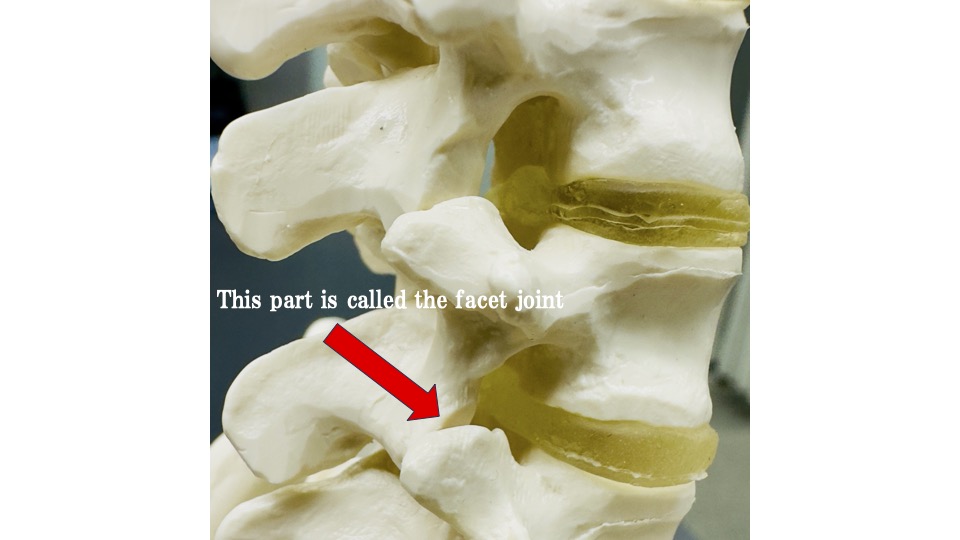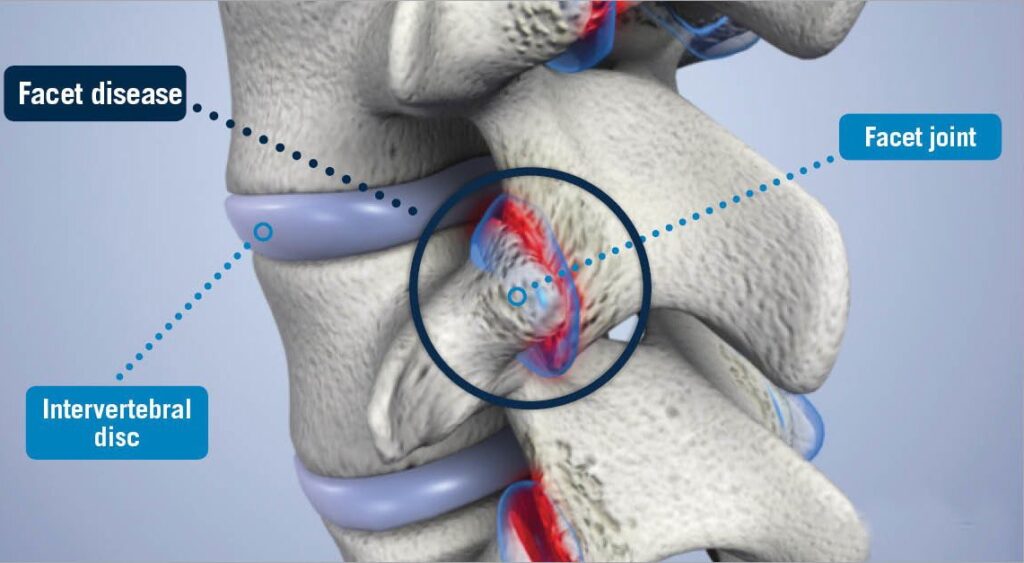It’s one of the most common symptoms in Chiropractic care.

Most people have probably never heard of the term “facet joint syndrome.” In fact, it’s rare to hear someone in a clinical setting say, “I’ve heard of that!”
So, what exactly is this condition?

The part in the photo is the joint part of the spine, consisting of 24 vertebrae (7 cervical, 12 thoracic, and 5 lumbar). The part that makes up this joint is called the “facet joint.”
The term “facet joint syndrome” is used when pain or discomfort around the problem area is thought to originate from the facet joints.
So, what specific symptoms might facet joint syndrome cause, and under what conditions do these pains occur?
Main Symptoms of Facet Joint Syndrome
The primary symptom of Facet Joint Syndrome is localized pain when moving the body. This pain occurs in the facet joints, which are part of the spine, specifically when they move. The most common areas affected are the cervical spine (neck) and the lumbar spine (lower back). These two areas are more prone to stress in daily life, which is a significant reason for the pain.
In the neck, the pain might be mistaken for a sprained neck (slept incorrectly), and in the lower back, it might be confused with a strained back. This confusion arises because these conditions also cause sudden, sharp pain when moving.
However, unlike these conditions, the pain in Facet Joint Syndrome is not caused by stress on the muscles or the tendons attached to them but rather by the joints themselves. So, what exactly happens?
While I mentioned that the cervical and lumbar spine are the most commonly affected areas, why is the thoracic spine (mid-back) less affected? This is because the joint surfaces of the thoracic spine are flat, unlike the cervical and lumbar spine, making it less prone to stress. Additionally, the thoracic spine is supported by the ribs, which helps distribute the stress more evenly.
Causes of Facet Joint Syndrome
Among younger individuals, lifestyle habits are a major contributing factor. Since the onset of the COVID-19 pandemic, with the shift to remote work, there has been a decrease in muscle flexibility and an increase in joint stress. Continuous localized stress on the facet joints leads to a higher incidence of symptoms in younger people.
What about older individuals? Many people now work until the age of 60,(In an ordinary Japanese company) and with the retirement age gradually increasing to 65 in Japan, this syndrome can significantly affect them. How does this condition impact those in the higher age brackets?
The most likely impact on facet joints as people age is a condition known as degenerative changes.

As shown in the diagram, aging leads to joint degeneration, causing pain in the affected areas. Modern medicine cannot repair these degenerative changes. When diagnosed with this condition, the primary treatments are typically pain relief medications, physical therapy (such as muscle strengthening), and sometimes surgical intervention. However, at Spine Chiropractic, I focus on redistributing the burden by increasing the range of motion in the surrounding joints and restoring the flexibility of the surrounding muscles. This approach aims to distribute the load more evenly and reduce stress on the affected joints. Additionally, I provide guidance for muscle strengthening and advice on daily living habits to help manage the condition.
However, it is essential to address these issues before they become severe. By taking care of any tension or stiffness in the lower back, neck, or shoulders early on, I can reduce the likelihood of future ailments. It’s crucial to maintain your body regularly to prevent these symptoms from developing.
At Spine Chiropractic, I have extensive experience in treating cases of facet joint syndrome. While some cases might seem to require surgical intervention, most conditions can be effectively treated with chiropractic care at my clinic. I will assess whether chiropractic treatment is suitable for your condition and provide the necessary care.
If you are experiencing these symptoms in the Yokohama, Bashamichi, Kannai, Sakuragicho, or Nihon-Odori areas, consider visiting Spine Chiropractic. I am here to help alleviate your pain and assist in preventing future issues.